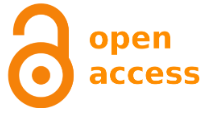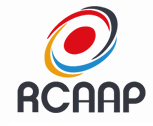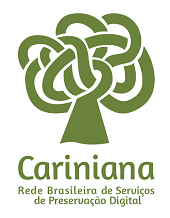Chromium supplementation modulates glucose metabolism in heat-stressed Girolando dairy cows
DOI:
https://doi.org/10.5433/1679-0359.2020v41n5supl1p2445Keywords:
Crossbred cows, Dairy cattle, Glucose metabolism, Liver biopsy.Abstract
The objective of this study was to evaluate the effects of dietary chromium supplementation on hepatic gene expression of lactating Girolando (Holstein x Gyr) cows under heat stress conditions in climatic chamber. Thirty-six ¾ Holstein x Gyr lactating cows were used, based on a 2x3 factorial scheme, to evaluate the effects of two diets (0 vs 0.50 mg of organic chromium kg-1 dry matter) and three environmental conditions (ECs): heat stress conditions in climatic chamber with ad libitum feeding (HS), a thermoneutral environment with ad libitum feeding (TN), and a pair-fed group in a thermoneutral environment (PF). Under HS group, the expression levels of glucose transporter 2 (GLUT2), glucose-6-phosphatase (G6Pase), and growth hormone receptor (rGH) were downregulated (P < 0.05) in chromium-supplemented cows compared to those in cows fed the control diet. GLUT2 expression was upregulated (P = 0.02) in the HS group and insulin-like growth factor 1 (IGF1) was downregulated (P < 0.01) in the PF group in cows fed the control diet compared to the expression in the TN group. No differences were observed between the ECs in terms of relative abundances of GLUT2, phosphoenolpyruvate carboxykinase (PEPCK), G6Pase, rGH, and IGF1 transcripts among the chromium-supplemented cows (P > 0.05). Heat stress caused changes in the expression of genes related to glucose metabolism, and organic chromium could modulate glucose metabolism in animals under heat stress conditions to some extent.Downloads
References
Camargo, L. S. A., Viana, J. H. M., Ramos, A. A., Serapião, R. V., Sa, F. de, Ferreira, A. M., Guimarães, M. F. M., & Vale, V. R. do, Fº. (2007). Developmental competence and expression of the Hsp 70.1 gene in oocytes obtained from Bos indicus and Bos taurus dairy cows in a tropical environment. Theriogenology, 68(4), 626-632. doi: 10.1016/j.theriogenology.2007.03.029
Collier, R. J., Collier, J. L., Rhoads, R. P., & Baumgard, L. H. (2008). Genes involved in the bovine heat stress response. Journal of Dairy Science, 91(2), 445-454. doi: 10.3168/jds.2007-0540
Edmonson, A. J., Lean, I. J., Weaver, L. D., Farver, T., & Webster, G. (1989). Body condition scoring chart of Holstein dairy cows. Journal of Dairy Science, 72(1), 68-78. doi: 10.3168/jds.S0022-0302(89)79081-0
Hah, S. J., Ryu, J., Lee, W., Jung, C. Y., & Lachaal, M. (2002). The hepatocyte glucose-6-phosphatase subcomponent T3: Its relationship to GLUT2. Biochimica et Biophysica, 1564(1), 198-206. doi: 10. 1016/S0005-2736(02)00450-9
Livak, K. J., & Schmittgen, T. D. (2001). Analysis of relative gene expression data using real time quantitative PCR and the 2∆∆C(T). Method. Methods, 25(4), 402-408. doi: 10.1006/meth.2001.1262
National Research Council 2001. Nutrient Requirements of Dairy Cattle: Seventh Revised Edition, 2001. Washington, DC: The National Academies Press. doi: 10.17226/9825
Pechova, A., & Pavlata, L. (2007). Chromium as an essential nutrient: a review. Veterinary Medicine (Praha), 52(1), 1-18. doi: 10.17221/2010-VETMED
Pfaffl, M. W., Horgan, G. W., & Dempfle, L. (2002). Relative Expression Software Tool (REST©) for group wise comparison and statistical analysis of relative expression results in real-time PCR. Nucleic Acids Research, 30(9), e36. doi: 10.1093/nar/30.9.e36
Ramakers, C., Ruijter, J. M., Deprez, R. H., & Moorman, A. F. M. (2003). Assumption-free analysis of quantitative real-time polymerase chain reaction (PCR) data. Neuroscience Letters, 339(1), 62-66. doi: 10.1016/S0304-3940(02)01423-4
Rhoads, M. L., Kim, J. W., Collier, R. J., Crooker, B. A., Boisclair, Y. R., Baumgard, L. H., & Rhoads, R. P. (2010). Effect of heat stress and nutrition on lactating Holstein cows: II. Aspects of hepatic growth hormone responsiveness. Journal of Dairy Science, 93(1), 170-179. doi: 10.3168/jds.2009-246
Rhoads, R. P., Baumgard, L. H., Suagee, J. K., & Sanders, S. R. (2013). Nutritional interventions to alleviate the negative consequences of heat stress. Advances in Nutrition, 4(3), 267-276. doi: 10.3945/an.112. 003376
Rhoads, R. P., La Noce, A. J., Wheelock, J. B., & Baumgard, L. H. (2011). Short communication: alterations in expression of gluconeogenic genes during heat stress and exogenous bovine somatotropin administration. Journal of Dairy Science, 94(4), 1917-1921. doi: 10.3168/jds.2010-3722
Sadri, H., Ghorbani, G. R., Rahmani, H. R., Samie, A. H., Khorvash, M., & Bruckmaier, R. M. (2009). Chromium supplementation and substitution of barley grain with corn: Effects on performance and lactation in periparturient dairy cows. Journal of Dairy Science, 92(11), 5411-5418. doi: 10.3168/jds. 2008-1877
Wheelock, J. B., Rhoads, R. P., Van Baale, M. J., Sanders, S. R., & Baumgard, L. H. (2010). Effects of heat stress on energetic metabolism in lactating Holstein cows. Journal of Dairy Science, 93(2), 644-655. doi: 10.3168/jds.2009-2295
Zulu, V. C., Nakao, T., & Sawamukai, Y. (2002). Insulin-like growth factor- I as a possible hormonal mediator of nutritional regulation of reproduction in cattle. Journal of Veterinary Medical Science, 64(8), 657-665. doi: 10.1292/jvms.64.657
Downloads
Published
How to Cite
Issue
Section
License
Copyright (c) 2020 Semina: Ciências Agrárias

This work is licensed under a Creative Commons Attribution-NonCommercial 4.0 International License.
Semina: Ciências Agrárias adopts the CC-BY-NC license for its publications, the copyright being held by the author, in cases of republication we recommend that authors indicate first publication in this journal.
This license allows you to copy and redistribute the material in any medium or format, remix, transform and develop the material, as long as it is not for commercial purposes. And due credit must be given to the creator.
The opinions expressed by the authors of the articles are their sole responsibility.
The magazine reserves the right to make normative, orthographic and grammatical changes to the originals in order to maintain the cultured standard of the language and the credibility of the vehicle. However, it will respect the writing style of the authors. Changes, corrections or suggestions of a conceptual nature will be sent to the authors when necessary.
















